Kraków 2017-05-09
Aviation training in Poland.
Part 2.
1918-1919.
In 1918, after 123 years of partitions, Poland regained independence.
Military Aviation School. 1919.
The Military Aviation School was established on Pole Mokotowskie in Warsaw. It operated from January 1919 to May 1919, when it was reorganized. As a result of its reorganization, another aviation school was established in Krakow. The school in Warsaw was transformed into the Pilots College in Pole Mokotowskie. The school used mainly the equipment left by the Prussian partitioners. There were planes of German and Austrian production here. Most of them have been significantly depleted. They required the constant care of mechanics. During this short period of operation of the School, it was not possible to develop appropriate organizational structures and training system. The main task of the school was to train aviators trained in the army of "white" (Tsarist Russia) with equipment in German.
French Pilot School 1919-1920.
The French Pilot School was basically a school division that was involved in training pilots, observers and shooters at the Blue Army of General Józef Haller. Its first commander was Major Pilot Mangera de Verennes. The sub-unit reached Pole Mokotowskie in May 1919. The school officially started operating on May 12, 1919. Major pilot de Bernis was appointed the commander. The training began in June 1919 using the equipment, instructions and training methods of France. All functions in the school were held by French officers and non-commissioned officers. It was estimated that the training from scratch for one aviator would last 4-6 months. It all depended on the efficiency of the equipment, the weather and the students' abilities. The most talented students were quickly selected out of the trainees in order to quickly make them instructors. Many of the graduates were sent to the front of the Polish-Bolshevik war. As early as August 1919, the French officers had helpers, Polish officers, who were to replace them soon.
The school had a large air base. There were 20 training and training planes, Caudron G.III biplanes (1913), including 10 twin-rudder machines. In 1920, Poland bought another 20 machines. The second type was the Nieuport 23 fighter biplane (1917) in the number of about 10. The third type was the Nieuport 17 fighter biplane (1916) in the number of about 10. The fourth type was the Morane-Saulnier MS-21 R.1 Rouler, which was in the amount of 5 pieces. The planes were created by rebuilding the Morane-Saulnier MS-21 C.1 planes and had smaller wings and tail. Airplanes could not fly, and their main purpose was to learn to taxi. All the planes used in the School had the then popular rotary engines, which required pilots to master the gyroscopic effect of the engine and propeller.
The equipment of the French School was the best of all aviation schools in Poland. Not only in terms of the plane park. They had all the spare parts and the entire tool park. There was no shortage of fuel, oils and greases. The soldiers had good uniforms and individual equipment. They also had all the necessary instructions, training plans, and the usual school aids.
Although the social conditions in Warsaw were good, the significant concentration of Pole Mokotowskie with other military units and their airplanes resulted in the decision to move the school to Dęblin. Therefore, in May 1920, the School was moved to Dęblin. The training was resumed in July 1920. The last French commandant of the School was Major de Chivre, because in July 1920 it was decided to release French officers from service in the Polish Army. It turned out to be extremely difficult at the School, because not all Polish understudies were present. The war with the Bolsheviks was still going on. Lieutenant pilot Jerzy Grabiński was appointed the commandant of the school, and the current commandant, Major de Chivre, remained as an advisor. In the summer of 1920, the Bolsheviks approached the Vistula line. This situation forced the transfer of the School to Bydgoszcz in August 1920.
Higher School of Pilots in Pole Mokotowskie. 1919.
The Higher School of Pilots (more precisely the 2nd Higher School of Pilots) in Pole Mokotowskie started its activity on May 20, 1919. Second Lieutenant the pilot of Stanisław Jakubowski. The school had three purposes. Training of new pilots. Retraining veterans from the Eastern Front who flew on Russian airplanes, on Austrian and German planes. The third goal was to improve pilots, graduates of the Lower School of Pilots in Krakow. The school had mainly combat aircraft.
Before training began, however, a fire broke out in the school hangar, destroying a large part of the school's equipment. What was saved was transferred to Krakow. In mid-September 1919, in Kraków, the 1st Lower School of Pilots was combined with the 2nd Higher School of Pilots. The new school was named the Lower Pilot Schoo.
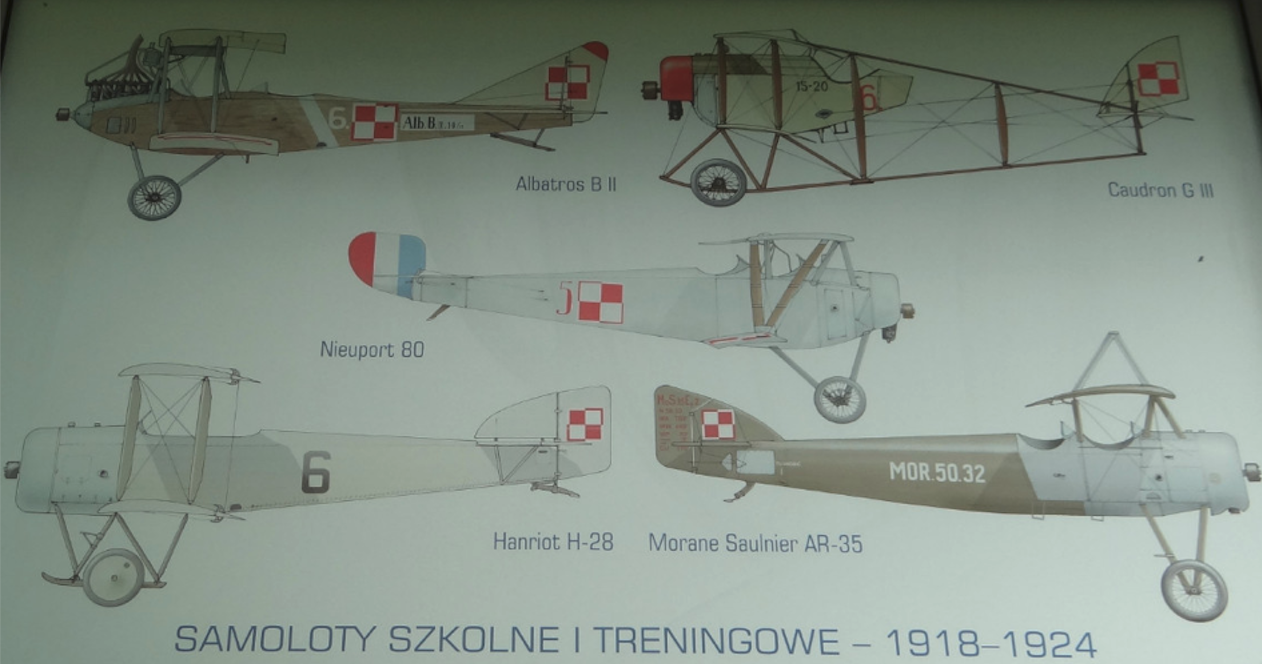
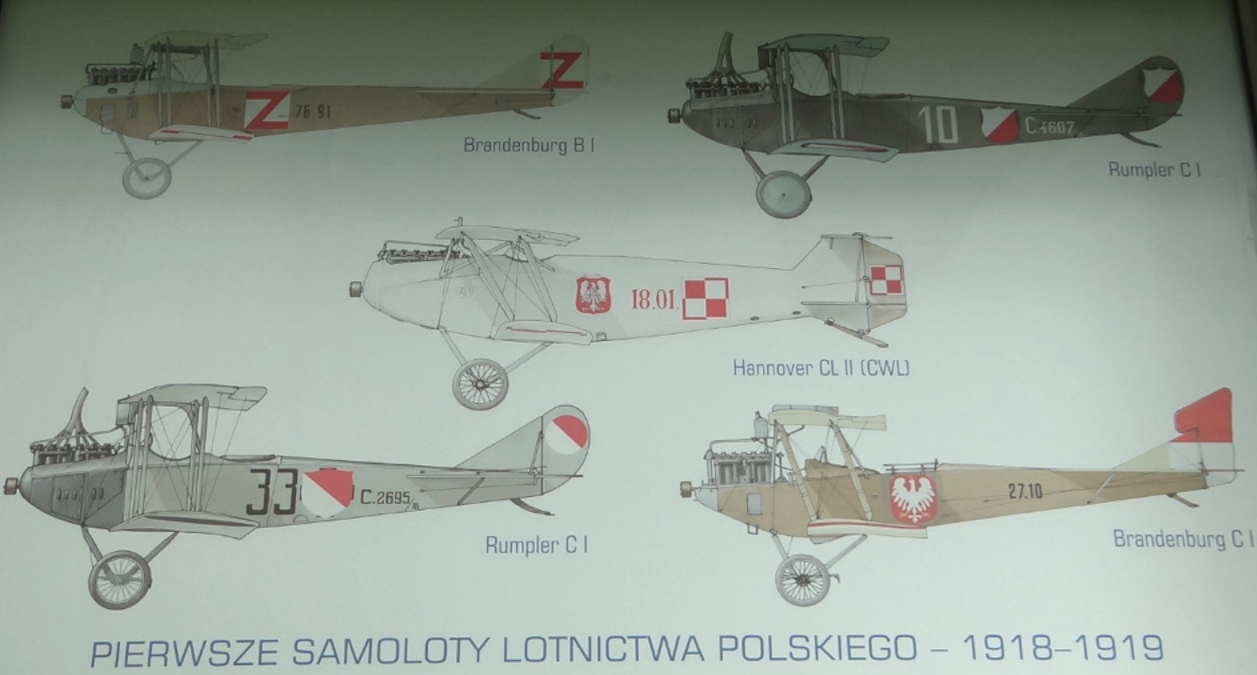
Kraków.
The expansion of Rakowice Airport, later known as Czyżyny Airport, began in 1915. The aim was to significantly increase the amount of equipment stationed here and the manpower due to the proximity of the war front. At that time, a barracks complex was built at today's Akacjowa and Ułanów streets, it consisted of six buildings with a palace architecture.
After the Russian troops were repulsed, the importance of Rakowice Airport decreased, as it ceased to be an airport near the front. But it also started to perform new functions. Mainly communications, mail and air parcels. On March 31, 1918 (or maybe even in 1917) the airport became one of the staging points for air mail connecting Vienna with Kiev, and then with Odessa. At that time, the airport covered an area of 55 hectares and already had large technical and workshop facilities.
On the night of October 30-31, 1918, Rakowice Airport was transferred to the Polish command. An Austro-Hungarian army officer, a Polish captain, Roman Florer, with the help of Polish personnel, took over the facility, and with it about 30 aircraft, preventing their devastation. Then he gave the airport under the orders of the Polish City Commander, Colonel Bolesław Roi. In this way, the facility became the first airport after Poland regained independence.
The Polish authorities gradually began to expand the airport facilities. The airport very quickly became the second largest in the Republic of Poland. It developed both in the civil and military aspect. It is here that the foundations of the Polish Aviation were created.
At this airport, the first military aviation unit in the Republic of Poland, called the Air Squadron, was created, the name of which was soon changed to the 1st Combat Squadron. The base was systematically expanded by creating aviation workshops and subsequent squadrons. Units from Rakowice Airport took an active part in the war against the Bolsheviks (Russians).
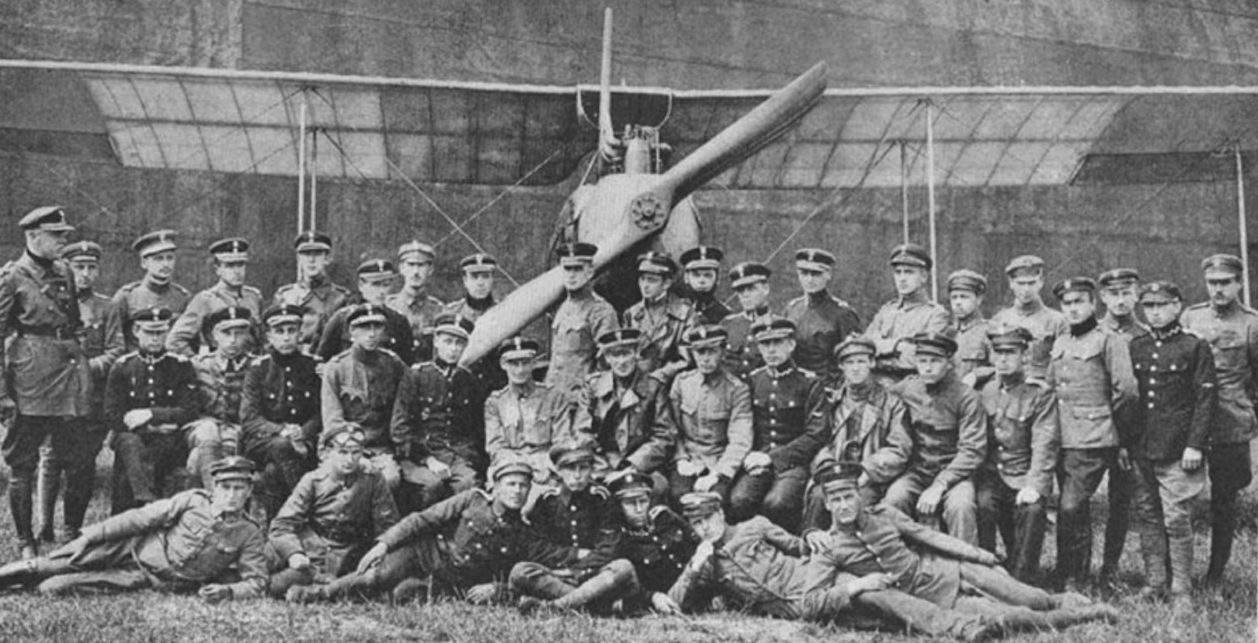
At the same time, a pilots school was established. The school is called the 1st Lower School of Pilots. It was established by an order of May 11, 1919. Cpt. pilot Roman Florer. The first instructors were Lt. Augustyn Domes, Sgt. Grimm, Sgt. Józef Kohut, Sgt. Kołodziejski, Sgt. Śledziejowski. The training program was based on Austro-Hungarian regulations and instructions. There were three stages of training, labeled A, B and C. Each stage was concluded with an exam. The trainees gained knowledge in the field of airframe and engine construction, meteorology, navigation and tactics. The pilots had to undergo an apprenticeship as mechanics, which lasted 2-3 weeks. The entire training took 3-4 months. The more talented ones completed the course in two months. There was no shortage of equipment in Krakow, so in this respect the training was undisturbed. However, there were no combat aircraft, as these were sent to the eastern front. That is why it was planned to send students for a monthly training in Warsaw. However, this did not happen, because in mid-September 1919, the 2nd College of Pilots from Warsaw was moved to Krakow. The schools were combined and the Lower Pilot School was established. Capt. pilot Roman Florer. The school had two training squadrons: for the lower course with the commander, lieutenant Augustyn Domes, and for the higher course, Lieutenant pilot Stanisław Jakubowski. After one year, in September 1920, the School was moved to Bydgoszcz.
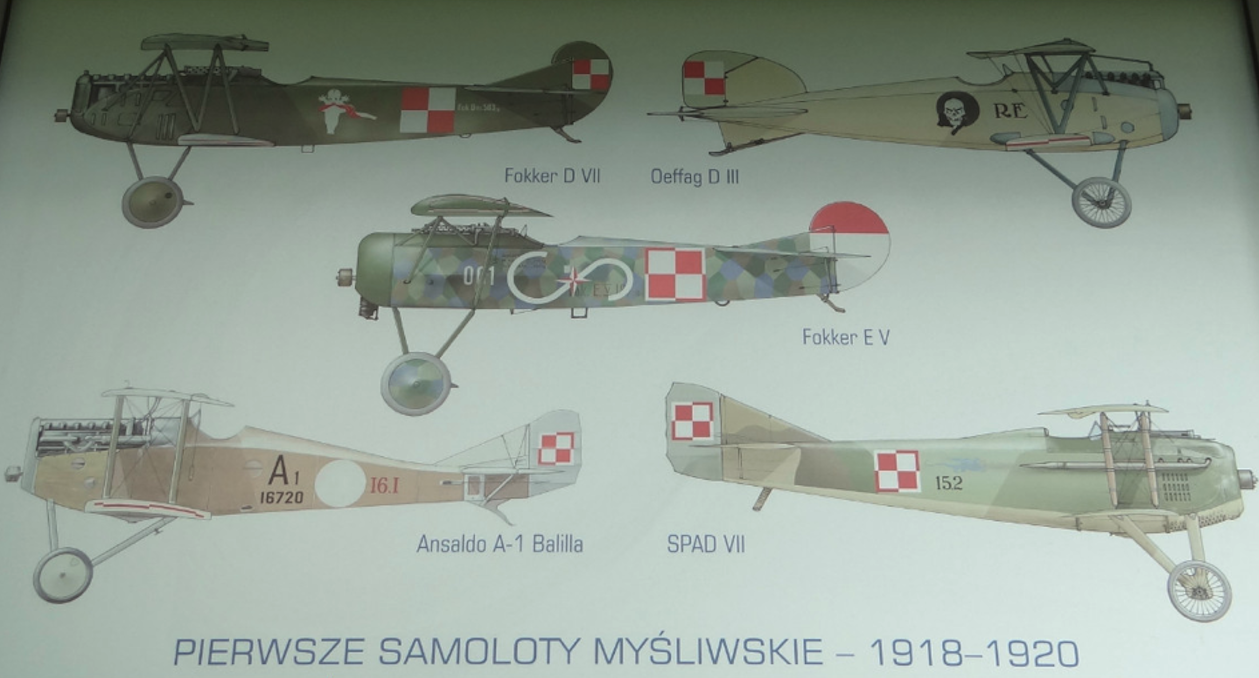

Poznań.
While getting ready for the Great World War, the German army built an airport near the town of Ławica, next to military barracks, on the exercise site. It covered an area of approximately 300 hectares. A school of pilots and mechanics was established here. A large percentage of students were Poles who, after Poland regained independence, became the backbone of Wielkopolska Aviation, and later Polish Aviation.
The end of the Great World War brought the Republic of Poland back after 123 years of independence. However, all the borders of the reborn Republic of Poland were set in battle. Nobody gave us anything to Poland. The Germans did not want to agree to a sovereign Greater Poland, let alone return Greater Poland to Poland. The desire to incorporate Greater Poland into Poland was not immediately manifested so as not to give the great of this world a reason to oppose the rebirth of a too powerful Poland. There were armed protests by the Polish inhabitants of Greater Poland. These events turned into the regular Greater Poland Uprising, the beginning of which we date on December 27, 1918. It happened in the context of the visit of Ignacy Jan Paderewski, who, on his way to Warsaw by train, arrived in Poznań on December 26, 1918, enthusiastically greeted by Poles. On December 27, 1918, Ignacy Paderewski delivered a speech to the crowds gathered in front of the Bazar Hotel. On the same day, a military parade on Saint Martin was organized by German residents. They pulled off Polish and coalition flags. They attacked Polish institutions. There were riots as a result of which a fight followed, then undertaken by units led by the Polish Military Organization.
The insurgents' decision to attack the Ławica Airport was made on January 4, 1919. On January 6, 1919, the insurgents, with a quick attack, seized the Ławica Airport within one hour. The Greater Poland insurgents quickly took control of the entire Greater Poland, except for its northern and south-eastern outskirts. The uprising ended on February 16, 1919, with the truce in Trier, which extended to the insurgent front the rules of the truce ending the Great World War of November 11, 1918.
As a result of the battle for the Ławica Airport and other military facilities, Poles received equipment worth 200 million German marks, which was the largest war booty in the history of the Polish army. There were several hundred (over 250) dismantled and preserved combat aircraft and observation balloons. The Poles did not waste this property. Several air squadrons were formed from the captured equipment, giving rise to Polish Aviation. These planes were later fought for Lviv and repulsed the Bolshevik (Russian) troops in 1920.
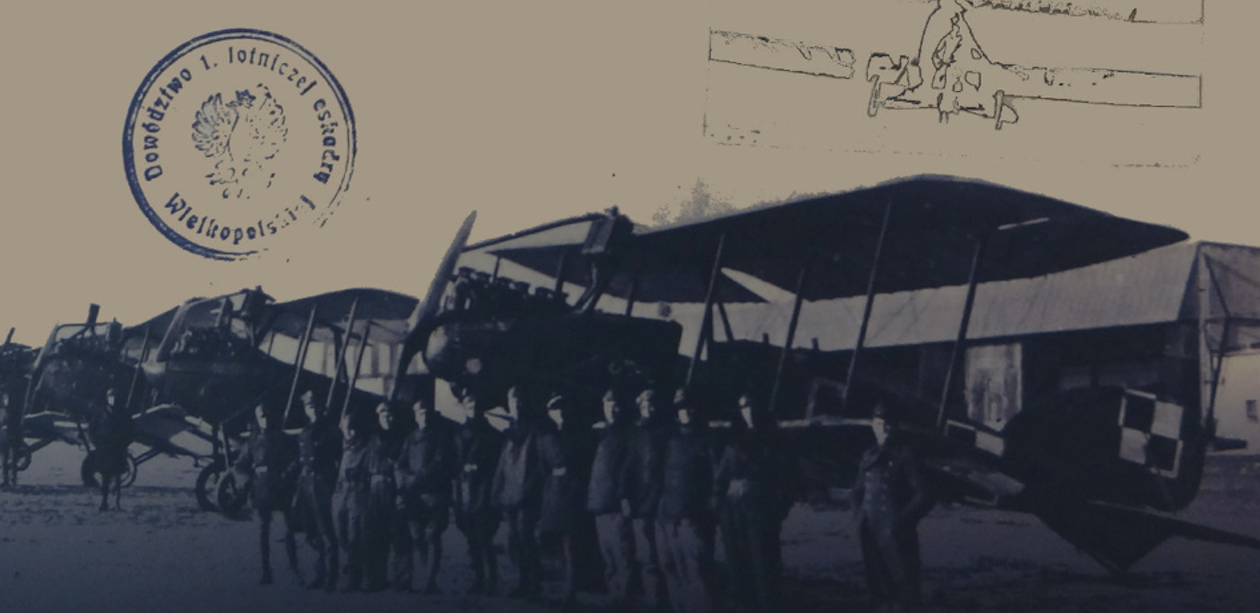
At the Ławica Airport, on the basis of the former Prussian aviation school, in January 1919, the Aviation School in Ławica was established. It became a source of staff for the Greater Poland Army. The Aviation School was soon renamed the Higher School of Pilots. Its commander was Ludomił Rayski, who was then in the rank of lieutenant. The pilots were glazed with a course system that lasted several weeks. The course ended with a practical exam, which consisted of a flight on the route Poznań - Toruń - Poznań. It was time to land in Toruń. The departure order was stamped, the mechanics made a cursory inspection of the engine and airframe. The student pilot started his way back. Some flew along the railroad tracks, "with the rails under their arms." Others used a compass. Still others got lost and sometimes reached Bydgoszcz or, due to lack of fuel, landed in random terrain.
On the basis of this school, the Aviation College was established, which was transferred to Grudziądz after a few months. In September 1919, Ławica Airport became the site of the first sports competitions and air shows in the independent Republic of Poland. Therefore, an appeal was published in the newspapers announcing the planning of air shows and competitions for September 28, 1919. The party lasted two days. Several thousand viewers came to the shows. 10 competitors took part in the pilot competition, 5 competitors in acrobatics, 7 competitors in combat tasks. Passenger plane flights and balloon rides were organized for the public.
A group of military aviators, designers and activists focused around the magazine published in Poznań by the Air Force Inspectorate. They threw the idea of creating an aeroclub. Already on October 30, 1919, in the building of the Society of Friends of Sciences, the official inauguration of the Polish Aero Club was held. The statute was adopted and the authorities elected. It is worth mentioning that one of the goals was to create a "large overhead commercial fleet". The president of the City of Poznań, Jarogniew Drwęski, was elected president of the board.
The Polish Aero Club initially operated only in Greater Poland and it was he who in April 1920, at the FAI general conference in Paris, was accepted as a member of this organization.
Written by Karol Placha Hetman
